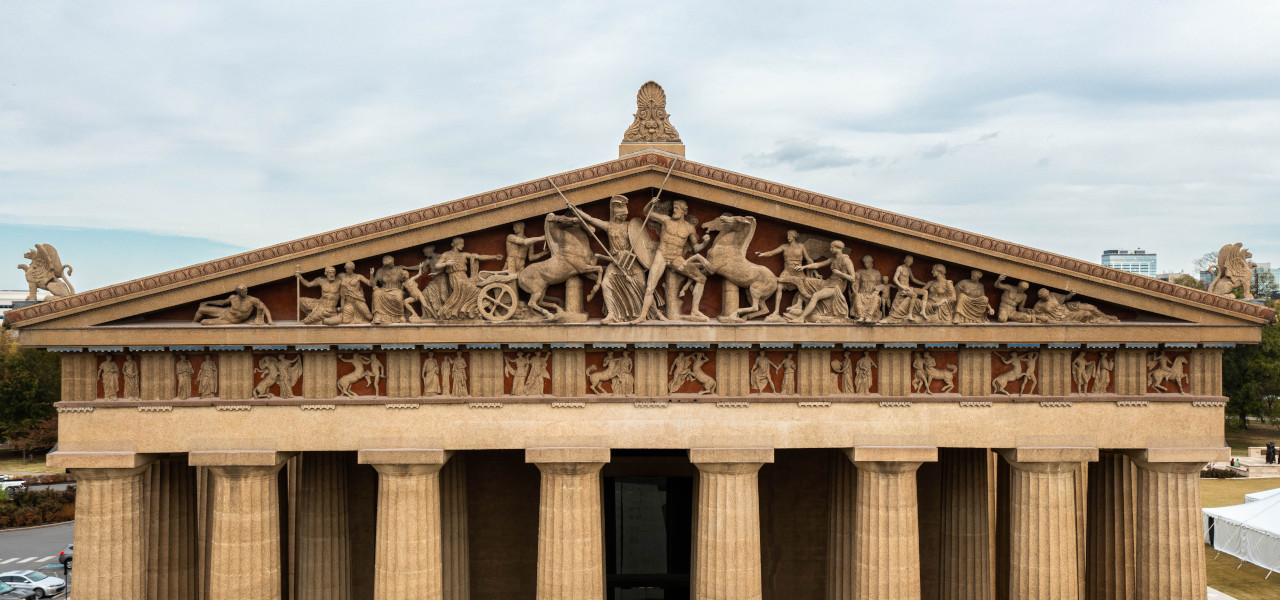A Piece of Ancient Greece in Downtown Nashville
Yes, you read that right – but don’t worry, you don’t have to dig out your dusty history books from school to see if ancient Greece actually expanded to present-day Tennessee.
The true-to-detail replica of the ancient Greek Parthenon Temple is actually a temporary exhibit to celebrate Tennessee’s 100th anniversary of joining the Union.
That was over two decades ago, though. What was once conceived as a temporary reconstruction has since been turned into a permanent landmark within Nashville’s Centennial Park – still pulling in a steady stream of curious visitors each year.
Why is There a Greek Building in Nashville, TN?
In order to understand why Nashville of all places has its own Greek temple, first we have to go back in time. In the 19th century, the city of Nashville was also known as the “Athens of the South”. This was mainly due to its large number of colleges and universities.
By the time the 100th anniversary of the state’s accession to the Union approached, the theme of the Tennessee Centennial and International Exposition was already clear and the acting mayor proposed the erection of a 1:1 replica of Athen’s Parthenon, which many considered to be the pinnacle of classical architecture.
Originally constructed in 1897 from plaster, wood and brick, the Parthenon replica was never intended to become a permanent piece of Centennial Park beyond the exposition’s festivities. But both the great popularity among Nashvillians and the enormous costs of demolition ensured that the replica eventually received a replica of its own – this time made of cement.
Permanent Exhibitions
The Parthenon in Nashville exhibits a plaster replica of the almost 2,500-year-old Elgin Marbles, a piece of classical Greek marble sculptures, which can otherwise only be viewed as originals in the British Museum in London.
A 42-foot replica of the Athena statue is also on display. The gilded replica is the largest indoor art installation in America. The painstakingly reconstructed statue (the original has long been lost) weighs in at around 12 tons and is surrounded by several much smaller but no less impressive statues.
There is also a permanent art gallery on the lower floor with 63 Impressionist oil paintings by numerous American artists of the 19th and 20th centuries.
In addition to the exhibition of historical replicas and original works of art, the temple also serves as a venue for open-air theatrical performances, especially of classical plays by ancient Greek authors.
If you are planning a visit, you should bring enough time. Guests can easily spend 2 to 3 hours exploring the entire complex.




